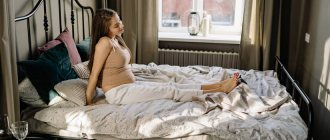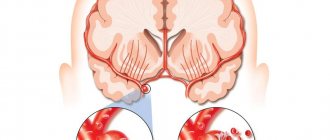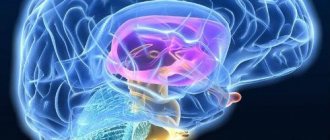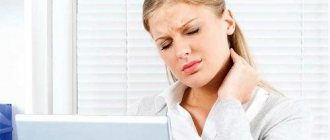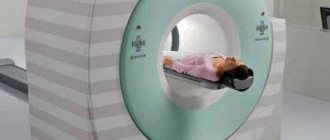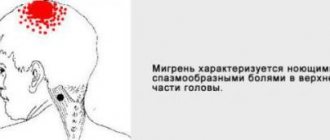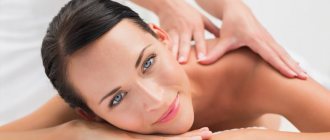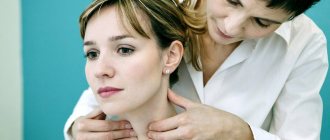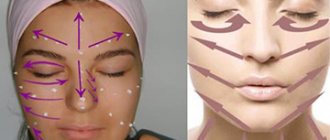Head massage is carried out for medicinal and cosmetic purposes, both as an independent procedure and as part of a complex treatment for patients of all ages.
Indications for therapeutic head massage:
- headaches, migraines;
- sleep disorders;
- mental fatigue;
- neuroses;
- chronic fatigue syndrome;
- chronic stress;
- convulsions;
- muscle and joint pain in the shoulder girdle, neck, face, and back of the head;
- recent skull injuries (bruises and concussions).
Cosmetic massage is indicated for worsening hair and scalp condition:
- dryness;
- dandruff;
- fragility;
- hair loss;
- seborrhea.
Effect of massage
The main purpose of massage is to stimulate the hair follicles, which leads to hair growth. It is usually prescribed for severe hair loss, which is caused by two groups of causes. The first includes external factors: frequent dyeing and the use of low-quality dyes, the effect of chemicals for curling and the use of hair dryers, straightening irons and curling irons.
Internal causes include improper metabolism, stress, the postpartum period, diseases of the immune system, fungal infections, cervical osteochondrosis, hormonal imbalances and poor nutrition. Taking antibiotics and strong medications, recovery from illnesses and injuries is often accompanied by hair loss.
Massage sessions can not only slow down the onset of baldness, but also increase hair thickness and get rid of dandruff.
Therapy is effective for diseases of the blood vessels of the brain, migraines, low blood pressure and insomnia, for diseases of the respiratory system and gastrointestinal tract. Massaging the scalp eliminates spasms of connective tissues. Brain activity and attentiveness improve, and overall tone increases.
Mechanism of influence on the body
Trichological massage is effective by improving blood circulation and lymph flow. Mechanical impact on the scalp stimulates the sebaceous glands and awakens the hair follicles. During treatment, dead epidermal cells are removed, the skin relaxes and the cells are saturated with oxygen and nutrients. Lymph passes through the vessels freely, ridding tissues of waste products, excess fluid and toxins.
Stimulation of nerve endings leads to the formation of multiple impulses going to the brain. This provokes the production of hormones, incl. and hormones of joy, pleasure, happiness. The nervous system relaxes, negative emotions and feelings of anxiety go away. At the same time, natural tissue regeneration processes are launched, which has a rejuvenating effect on the entire body.
Indications and contraindications
Massage of the scalp is recommended not only as a means of prevention and hair restoration, but also to eliminate many skin diseases. It is indicated for:
- Itching, dry skin and frequent irritation;
- Edema;
- Thrombosis;
- For injuries and diseases of the musculoskeletal system;
- Drowsiness and apathy;
- Muscle cramps and spasms;
- Pulmonary failure;
- Muscle pain;
- Stress, depression;
- Emotional exhaustion and chronic fatigue;
- Impaired blood circulation;
- Migraines and headaches, accompanied by vomiting, nausea, fainting.
Do not massage if:
- There are open wounds, abrasions, and hematomas on the skin;
- Diagnosed with hypertension;
- There are infectious diseases;
- Enlarged occipital and submandibular lymph nodes;
- Have chronic heart disease.
Features of blood circulation in the brain
Problems with blood flow occur when blood volume decreases or when blood vessels become obstructed. Symptoms of the onset of the disease include:
- Frequent and severe headaches;
- Pain in the eyes that appears in the evening;
- Frequent and severe dizziness;
- Attacks of vomiting and nausea;
- Tinnitus, feeling of stuffiness;
- Numbness;
- Poor sleep;
- Memory impairment;
- Fast fatiguability;
- Absent-mindedness.
Progressive vascular disease leads to a sharp deterioration of memory, impaired coordination of movement, irritability and depression.
The main danger of poor blood circulation is the occurrence of Parkinson's syndrome or dementia.
Dyscirculatory encephalopathy is a slowly developing lesion of the blood vessels of the brain. It often accompanies hypertension and osteochondrosis, vegetative-vascular dystonia. High blood pressure leads to thickening of the walls of blood vessels until the lumen is completely closed. This provokes the development of a cerebral stroke.
Diagnosis of the disease is carried out using ultrasound or MRI, electrocardiography. The course of medications is prescribed individually, and it is aimed at protecting neural connections, stimulating metabolic processes and normalizing blood flow.
In addition to drug treatment, physiotherapy, exercise therapy, traditional medicine and special massage are prescribed.
Head and neck massage technique
It is recommended to massage the head twice a week as a preventative measure and for hair growth and strengthening, followed by hair washing. Some people practice scalp massage with a comb, after which they wash their hair, then proceed to the main head and neck massage. Others perform a scalp massage first, and wash their hair after the main massage if the hair becomes oily.
Includes classic massage movements. Perform a head massage:
- stroking: longitudinal, transverse and clasping one hand on the forehead, moving towards the back of the head. The second hand supports the back of the head;
- stroking down and to the sides on the crown, going around the ears - on the neck. The intake stimulates the nerve endings of the skin, which helps to activate blood circulation to the hair roots, cleanses the glandular ducts, delivers fresh oxygen and nutrition to the skin and hair follicles;
- zigzag, rake-shaped rubbing with both hands from the top of the crown to the bottom border of the hair. To direct movements transversely or longitudinally in all directions, the position of the hands is changed;
- active rubbing to enhance secretory activity and cleanse the scalp. At the same time, hyperemia will appear, the nutrition of hair and skin will improve, the nerve endings in the scalp will be excited, and the headache will go away;
- stretching and shifting the skin, placing the palms of the hands at the same time on the forehead and back of the head. The skin is first shifted on the forehead, then across the back of the head, then along. Cover the entire scalp. Use your fingers to pinch the folds on the forehead and back of the head;
- kneading, increasing the mobility of the scalp, strengthening deep tissues and increasing its tone, relieving pain, improving hair nutrition;
- Ayurvedic technique - massage the head with a large comb, then separate strands of hair for light tugging on each strand. At the same time, they hold their head. The pulling force is gradually increased, but without pain or hair pulling;
- stroking between each change of massage movement. At the same time, the patient feels a slight pleasant warmth, his muscles relax, the local skin temperature increases, which improves skin breathing;
- vibration movements, the vibrations of which must be of different speeds and frequencies, amplitude and intensity. Vibration head massage has a beneficial effect on the nervous system and internal organs.
Head massage is performed along massage lines that pass:
- from the bridge of the nose along the bones: frontal and parietal, down to the neck and further to the trapezius muscle;
- from the temporal bone past the area behind the ear to the neck;
- along the side surface of the neck from the ear towards the trapezius muscle;
- from the bridge of the nose along the eyebrow to the temples and crown of the head.
Neck massage is performed:
- stroking: planar, grasping, comb-shaped, pincer-shaped in the direction from top to bottom;
- rubbing: straight, circular, crossing, sawing and hatching;
- kneading: transverse, longitudinal, forceps, shifting, stretching, pressing;
- vibration: puncturing, light tapping, patting and shaking with individual fingers.
A neck massage will relax the muscles of the shoulder girdle and skull, which is necessary for normal blood circulation and relief from headaches and muscle pain. Massage manipulations on the neck are carried out on the sides and back from top to bottom, and from the front - from bottom to top.
Massage indications
To prescribe a massage, the following indications are required:
- insufficient blood circulation and tissue nutrition;
- narrowing of the alveoli, impaired serotonin metabolism;
- uneven expansion of blood vessels in the brain;
- reduction of arteriolar reactivity to carbon dioxide;
- disorder of the central nervous system;
- low or high blood pressure;
- stress, migraine and pain syndromes of the head and muscles for other reasons;
- there is no reaction of the scalp to cosmetics;
- dandruff, improper functioning of the sebaceous glands;
- Intense or delayed hair loss and baldness;
- Hypertension and hangover syndrome.
From the editor: How is an MRI of the brain performed with contrast?
Massaging the head and neck to improve blood circulation can be a good solution to the problem without the use of drugs. Cerebrovascular accidents occur in people of all ages, from newborns to the elderly, so ways to combat them are always relevant.
Signs of circulatory problems include:
- regular headaches, dizziness;
- tinnitus;
- weakness;
- dark spots before the eyes, lightheadedness;
- fainting.
Simple types of massage can act as both therapeutic and preventative agents.
Indications for massage of the cervical-collar area
Massage is indicated for the following diseases and conditions of the body:
- fatigue, tension after a working day, stress, insomnia;
- spasm and tension in the muscles of the neck and back (trapezius, deltoid);
- long-term static load on the cervical spine, physical load on the shoulder and neck area;
- headache, dizziness;
- prevention of neuralgic diseases of the hypo- or hypersthenic type;
- plexitis and neuritis - inflammatory pathologies of the nerves;
- slight increase in blood pressure;
- diseases of the cervical spine - osteochondrosis, chondrosis, arthrosis, scoliosis and others;
- rehabilitation after injuries, bruises and fractures, strokes and heart attacks (as prescribed by a doctor);
- poor posture, deformation of the spinal column;
- diseases of the gastrointestinal tract (gastritis, colitis);
- some diseases of the respiratory system (emphysema, bronchial asthma).
Separately, it should be noted that daily self-massage in the cervical-collar area is very useful for those who experience high visual stress. Massage can be carried out in a course for both therapeutic and preventive purposes.
In general, massage of the cervical-collar area is recommended for all people, since this area is exposed to stress every day.
Oil head massage at home
Make yourself comfortable
Before starting the massage, choose a quiet place where you can abstract from the outside world for at least half an hour and focus on yourself, your head and the massage.
Massage with your fingertips, not your nails!
Place the fingertips of both hands in the center of the forehead, and the thumbs at the temples. Lightly press your fingers on your head and select a pressure that is comfortable for you.
Move your fingers towards the crown and continue pressing movements, gradually moving towards the back of the head. Having reached the back of the head, move your fingers from the center to the sides and move towards the forehead.
Having covered the entire surface of the head with such pressing movements, repeat the cycle from the beginning, but this time using light sliding movements from the center of the head to the sides.
Try to synchronize your movements with your breathing - this will have a calming effect and help get rid of headaches.
Use oil
Apply a few drops of massage oil to your fingertips. Massage your head in circular movements of a small radius, starting from the temples and moving first to the crown and then to the back of the head. Add oil as needed.
After the entire surface of the scalp is covered with oil, wrap your head with a warm towel and leave for 10-15 minutes. If your scalp is prone to dryness, itching and irritation, you can leave the oil on overnight.
Wash your hair with shampoo
After finishing the massage, wash your hair with shampoo, then use your regular conditioner. Perhaps one time is not enough to remove the remaining oil from your hair. In this case, wash your hair twice.
It is better to use mild sulfate-free or baby shampoo.
Preparation for the procedure
Before starting the procedure, you need to choose a massage product. If your skin is dry, coconut oil is suitable; for oily skin, it is better to use grape seed oil or a light gel cream. The texture of the product should not be too thick, but if it is quickly absorbed, it will not be possible to carry out a full massage. You will have to constantly apply the cream. Be sure to ensure that the product does not clog your pores.
Preparatory procedures include several stages:
- Thorough cleansing . First you need to remove makeup with a special product: milk, micellar water. Then be sure to wash your face with foam or gel, pat your face with a towel, but do not rub it.
- Warming up . The skin will respond better to massage with creams or oils if the skin is warmed up before the procedure. There is no need to steam your face, just apply a warm towel and wait 5 minutes.
- Hydration . Massage is performed only after applying the cream. If you pull on dry skin, wrinkles and various damage will appear on it. Apply a light cream or oil in a small amount along the massage lines.
Don't neglect preparation. Otherwise, instead of tightened skin, you can get pimples, comedones and various types of inflammation.
Effect of massage
After self-massage of the posterior sections, massage the anterior muscles of the neck. The same techniques are used in the same sequence. When massaging the anterior neck muscles, stroking is performed more gently; the skin should not stretch. It is necessary to squeeze the area behind the ear near the sternocleidomastoid muscle. Alternately, first with two, then with three and four fingers.
Then you need to massage your chin. Stroking is done from the jaw to the bottom of the chin and from the medial line towards the ears (4-5 repetitions). Then they knead the chin. To do this, place the pads of four fingers on it and massage your chin, while moving the skin in one direction or the other (4-5 repetitions).
Massage your head with a comb or brush
In order not to damage the skin, but to ensure strengthening and accelerated hair growth, you need to choose the right comb. Two main requirements: the product must fit comfortably in your hand (so that the procedure does not cause discomfort and does not overstrain the hand muscles) and be made from natural materials. Wood or bristles are ideal. The teeth of such combs bend well and do not electrify the strands.
To massage the entire head, you need to treat it with the product in different directions. Quantity – at least one hundred times, duration – about 12 minutes. Brush back and forth, from the crown to the forehead and vice versa. You should feel your skin warming up; if you feel it, you are doing everything right. Repeat the procedure daily to see the effect after a month. For best results, use essential oils (2 drops per comb).
Massage with essential oils
Aromatic oils are actively used in the spa industry due to their relaxing and calming effect. Every massage therapist has a couple of oils that clients especially like. But essential oils are not only about pleasant smells and sensations, they are also beneficial, since their use stimulates hair growth, helps treat split ends and eliminate dryness.
Be careful: some components of the oils may be allergens, so before using them you need to do a test on the skin behind the ear or on the crook of the elbow.
The essential oil is concentrated and can cause skin burns, so it is used only as an addition to a massage product (or oil). Add 1-2 drops of essential oil to 1 tablespoon of oil (for example, olive or baby oil) and rub into the skin for a long time, moving from the forehead to the crown. The oil can be washed off immediately after the massage, but if time permits, it is recommended to wrap your head in a warm towel for a couple of hours.
It is very useful to pull the hair during a head massage; this should be done carefully, without causing any unpleasant sensations. After pulling all your hair, strand by strand, warmth should spread throughout your head.
Please note that not every essential oil is suitable for massage. The most suitable oils for massaging hair and scalp are almond, lemon, chamomile, tea tree and Japanese mint oils.
The procedure is contraindicated for high blood pressure, rashes, head injuries, and eczema.
Indications and contraindications
Such a healing technique as head massage has its own indications and contraindications. In most cases, it is a useful procedure that has a positive effect on the body and health. But sometimes it is better to refuse it so as not to aggravate some diseases. So, indications for head massage:
- headache;
- insomnia or other sleep disorders;
- chronic fatigue;
- state of anxiety;
- constant stress;
- emotional instability;
- muscle spasm;
- convulsions;
- dandruff;
- hair loss;
- dry skin, hair;
- seborrhea;
- damaged hair ends.
The technique cannot be recommended or used if the patient:
- head injury in any condition;
- eczema;
- scalp disease (fungus);
- baldness;
- dilated blood vessels on the face;
- too oily hair;
- recent surgery;
- elevated temperature;
- spondylosis;
- spondyloarthritis;
- thrombosis;
- embolism;
- acute stages of any chronic diseases;
- oncological diseases;
- heart problems.
Contraindications to massage of the cervical-collar area
Despite the great benefits of massage, there are conditions in which it is contraindicated. Therefore, before such a procedure, it is necessary to consult a doctor.
Contraindications to massage of the cervical-collar area:
- tumors, severe inflammatory processes or wounds in the neck - fractures, ruptures, bruises;
- infectious diseases in the acute stage, high fever;
- high blood pressure;
- decompensated atherosclerosis;
- respiratory and heart failure;
- decompensation of liver and kidney function;
- instability in the cervical segment of the spine;
- unhealed fracture or unhealed neck injury;
- the presence of herniated intervertebral discs in this segment;
- thrombosis and blood pathologies with dysfunction of the hemostasis system (hemophilia);
- osteomyelitis, bone tuberculosis;
- skin diseases in this area, chronic dermatoses.
Massage of the cervical-collar area of a pregnant woman can only be carried out according to a doctor’s indications. Before the session, the massage therapist should be warned about your pregnancy.
Benefits of scalp massage for hair
During a short massage procedure, the hair follicles are stimulated, increasing blood flow to the scalp and activating nutrition of the hair follicles. All this is extremely useful for preventing hair loss and also leads to better hair growth.
When using additional products (scrubs, combs, etc.), the scalp is cleansed of dead cells and excess sebum. Massage enhances the benefits of nutrients in hair care products and increases resistance to environmental damage. Hair becomes shinier, softer and less susceptible to contamination.
From the editor: Massage for headaches
At the same time, the following processes occur:
- stabilization of lymph flow, improving the removal of toxins from cells and removing swelling and stagnation in tissues;
- muscle relaxation;
- increasing the tone of the scalp;
- impact on superficial nerve receptors, which reflexively affects internal organs (remember acupressure);
- endorphins are produced, those same “happiness hormones”;
- the psycho-emotional state of a person is leveled out.
Thus, by reducing the overall stress state of the body through head massage, in particular, you can achieve increased growth of healthy hair.
Using additional accessories
If the massage is carried out by a specialist in the salon, then it is carried out exclusively with the palms and fingers, or with a vacuum can. However, self-massage at home can benefit from aids.
Murashka
This simple and inexpensive hand massager has excellent anti-stress properties and is suitable for cosmetic procedures.
Using “goosebumps” is very simple:
- The massager should be placed on top of the head in the center and make smooth movements in different directions;
- During the procedure, you need to lightly press the handle or lift it up;
- the rounded tips of the “meridians” of the massager will glide over the scalp and stimulate the acceleration of blood flow.
It is recommended to continue the procedure using the “goosebumps” for about 5 minutes. Then sit quietly for another quarter of an hour.
With the help of goosebumps, you can even massage a child’s head, although ordinary massage practices for children are not recommended until they reach 12 years of age.
Laser comb
The laser comb is a modern device with complex action. The properties of the comb are especially useful for hair loss. It not only gently massages the skin with vibrating movements, but also affects the hair follicles with blue and red LED radiation, activating their growth.
When using the device, you must not forget that the massage movements are carried out from the top of the head towards the sides and to the back of the head. The total duration of the procedure should not exceed half an hour.
Comb vibrating massager
The device is a simplified version of a laser comb - without LED radiation, but only with vibration.
Use is very simple - move the comb from the crown down or to the sides, light vibration stimulates blood circulation and improves the condition of the scalp. The procedure should take about a quarter of an hour, just like a regular massage.
How to do a head massage correctly
Any massage procedure consists of the same stroking and tapping movements. But, depending on the goals of the massage, their intensity may change; during therapeutic and cosmetic procedures, different areas of the head may be more or less involved.
For headaches and tension
For migraines and stiff neck muscles, a short acupressure massage of the head will greatly benefit
It is carried out for a total of about 6 minutes, and special attention is paid to the area of the temples and the area of the cranial fossa on the back of the neck
You need to perform the massage firmly, but carefully, using precise pressure with your fingers on the listed areas and on especially painful places. The duration of the press should be about 5 seconds. The back of the head must be massaged with rhythmic movements with the heel of the palm in the direction from the back of the head to the neck.
A correctly performed procedure will relieve muscle and vascular spasms, and the headache will subside without medication. At the end, it will be useful to lie down in a relaxed state for some time so that the beneficial properties of the massage can be fully realized.
Attention! If during the procedure the headache only intensifies, the massage must be stopped, otherwise the body will be harmed.
For hair growth and improved blood circulation
The main goal of a cosmetic massage is to awaken and activate the hair follicles. Therefore, here you need to act on the skin not pointwise, but make stroking movements that warm up the entire scalp.
- Before the procedure, for convenience, it is recommended to comb your hair and part it a short distance from the left ear. As the massage progresses, the parting will need to be gradually moved to the right side.
- A useful massage begins with lightly stroking the skin with your fingertips, then you need to move on to rubbing the skin with your knuckles.
- Then you can carefully gather the skin into folds and make several rolling movements towards the back of the head.
- The massage is completed with quick vibrating movements along the parting, which are performed with the fingertips.
Important! Massage can only be used if there are no inflammatory diseases of the scalp. If the skin is damaged and unhealthy, the properties of the procedure will be harmful.
Relaxing massage to relieve stress
The procedure is carried out using one of the popular methods using standard technology - from stroking to kneading and tapping
The only important nuance that needs to be remembered is that the main attention must be paid to the back of the head. It is she who is responsible for a person’s emotional state; stress, overexertion and fears accumulate in it.
A relaxing massage can be accompanied by aromatic incense and oils, and pleasant, quiet music.
During pregnancy
Proper head massage is very useful for pregnant women - it helps to relax and calm down, improves well-being and normalizes sleep. But you need to remember important rules.
- Massage during pregnancy should not be too intense. A significant acceleration of blood circulation will harm the expectant mother, as it can lead to miscarriage or early birth.
- The procedure should be done exclusively with light and stroking movements. You will have to avoid tapping and strong kneading to avoid harm.
- If there is the slightest discomfort during the procedure, it should be stopped immediately - deterioration in well-being can harm the fetus and affect its health.
Massages against headaches and stiff neck muscles
Eliminating headaches is what a head massage is useful for. It can be used on different parts of the head.
Temples and forehead
For headaches due to overexertion or hypothermia, a light massage of the temples and forehead will help. Improved effect can be achieved by using essential oil:
- lavender - if you need to warm up after hypothermia;
- mint – for a feeling of heat in the head;
- chamomile - for relaxation.
It’s easy to do a head massage correctly. Using the fingers of both hands, lightly massage your forehead and temples. Pressing the skin with your fingertips will reduce tension in your facial muscles. Using the pads of your ring fingers, gently press on the eye sockets at the root of the nose. Smooth out the muscles around the eye sockets under the eyebrows. Gently wipe your face along both sides of the nose, moving to the jaw (this is often where the center of accumulated tension is located).
Neck and shoulders
Tight, rigid neck muscles suppress the nerves. This is manifested by pain, numbness, blurred vision
Significant relief will be provided by gentle pressure on the neck muscles (just below the hairline) - gently massage the neck, placing your hands on each side of it.
Light self-massage is the movement of the shoulders: lift them, move the shoulder blades, then relax. Repeat 3-4 times.
Use your left hand to massage your right shoulder, squeezing the muscles on the back of your neck and shoulders. With your right hand, do the same on your left side.
With your fingers, grab the skin on the back of the neck (the so-called collar area), lightly squeeze, moving upward. Once you reach the base of the skull, return to the shoulders.
Grab your head with your hands (fingers pointing towards the top of the head), move in a circular motion along the top of your neck, while applying light pressure.
How to do a head massage
The head massage technique is simple to perform:
Light strokes from the forehead to the back of the head 3-4 times. This technique will awaken the nerve endings and warm up the scalp.
From the editor: How to learn speed reading and develop long-term memory
Deeper and more intense strokes along the same trajectory. Movement cleanses the ducts of the sebaceous glands and activates metabolism.
Rubbing in a circle and in a zigzag with the right palm. During this, the left hand holds the patient's head.
Continuous vibration techniques. Performed using the pads of the index and middle fingers. They hit the scalp easily and quickly. The trajectory is along the parting. When the reception is over, the specialist makes another parting, retreating a couple of centimeters, and continues the blows.
Acupressure head massage: benefits
Acupressure head massage does not require additional equipment; anyone can easily perform it at home. The technique involves working on certain biologically active points on the head for a few seconds. The pressure should be moderate, gradually increasing.
Active points:
- two points on the sides of the wings of the nose;
- point on left temple;
- two points on the hairline, located above the middle of the eyebrows symmetrically from the center of the forehead;
- four points on the back of the neck at the hairline;
- point on the back of the head;
- three points on the upper surface of the skull, located in a straight line from the nose.
Massaging these points will help relieve headaches, stress and fatigue. In addition, after the session, blood circulation will noticeably improve.
Massage of the head and collar area to improve blood circulation
The procedure to enhance blood flow lasts no more than three minutes, the course consists of daily massage sessions. The patient is in a sitting position or lies on a flat surface.
The massage begins from the cervical region. The sides of the neck are stroked, rubbed and kneaded first, then the back surface. The front surface of the neck should be massaged gently, without much effort. Movements are smooth, neat and slow.
Next the chest is worked on. Classic movements are used, intensity is medium, trajectory is from top to bottom.
Finally, the massage therapist works on the back and front surfaces of the shoulder girdle. From behind, movements should be directed from top to bottom, and from the front, from bottom to top.
The effect of the procedure is noticeable after the first sessions. A person begins to feel much better, the “fog in the head” disappears, apathy goes away, a good mood and a desire to act appear.
Who is the procedure indicated for?
There are quite a few indications for manipulation:
- Frequent attacks of headaches or migraines. Pain is often caused by blood pressure that is too high or low. The procedure will speed up the movement of blood through the vessels and eliminate stagnation, which will reduce indicators for hypertension and increase them for hypotension.
- The procedure has a good effect on the hair follicles and scalp, which will help avoid alopecia. Massage manipulations intensively stimulate the movement of venous blood to the roots and help strengthen the hair.
- A course of such treatment will help improve vascular tone in the brain. If you regularly repeat sessions, the active flow of blood flow to the brain tissue will become habitual for the body, and this process will occur by itself.
- Self-massage of the face helps to regenerate epidermal cells and improve the condition of the skin, as well as smooth out wrinkles.
- Wellness procedures can be performed after waking up to enhance brain activity. A morning session will help you spend the whole day in a good mood and significantly improve your performance.
- Osteochondrosis is a disease that can progress over years; with an 80% probability it appears in people leading a sedentary lifestyle. Massaging the back of the neck will prevent the onset and progression of the disease.
- The procedure is recommended for myofascial syndrome of the cervical spine.
Rules and techniques of execution
The easiest way to massage is to use your own fingers, but there is always a risk of influencing the wrong points, resulting in a migraine instead of a therapeutic effect. Familiarize yourself with the methodology and rules for performing the procedure:
- Carry out a massage before or during washing. This will allow the beneficial components in the shampoo to be better absorbed into the roots. Those with dry hair can also massage after washing, since the procedure activates the production of sebum.
- Start the massage with warming circular movements (they should be light) in the temporal areas and at the top of the forehead (hair growth line), gradually increasing their intensity and pressure, and moving on to the hairline. Finish the session with soft strokes again.
- The duration of the procedure is from 10 to 15 minutes. It is not recommended to increase the time, and if the session is carried out “in a hurry,” the effect will be minimal. The frequency of massaging is at least twice every 14 days.
- Movements are performed in the direction of growth of the strands. The massage therapist places his hands on top of the hair, as close to the roots as possible. The exception is the case when manipulation is carried out to treat seborrhea: then the fingers should directly touch the skin.
- Massage with warm fingers. In addition, to speed up blood circulation, you can drink hot tea before the procedure (regular or herbal - chamomile, sage, lemon balm, linden, etc.)
Stroking
The simplest technique, which consists of the massage therapist performing gentle and soft strokes from the forehead to the back of the head. Then similar movements are made from the parietal part to the ears, in the direction of hair growth. This massage helps improve blood flow. Ten minutes of stroking is enough to stimulate metabolic processes. In addition to accelerating hair growth, stroking helps improve skin condition.
Trituration
The effect on the dermis and roots is performed using the fingertips. Rubbing includes up and down movements, circular movements, and pressure. Start with the area behind the ears, then move to the neck, near the hairline. Next they move to the temples, then to the crown and forehead. A few minutes of rubbing activate the sebaceous glands, so after finishing the procedure you should immediately wash your hair.
Pat
This technique tones the skin. It is not for nothing that a similar technique is used for body massage. In order for the pats to be correct, four fingertips of each hand are used. The remaining two, large ones, carry out fixation in a certain area. The technique is not intensive, all you need to do is gentle pats in different parts of the head. The session takes no more than five minutes.
Reaching out
A special technique provides rapid blood flow to the roots, which is guaranteed to accelerate hair growth. The execution of this technique is as follows:
- Grab a single strand with your fingers.
- Slowly, slightly stretching each bundle, pull it up.
- Add small oscillating movements to feel the tension on the roots.
Combing
The process that is used to tidy up the curls has a beneficial effect on the scalp, but it must be done correctly. For therapeutic purposes, use a comb or massage comb, but with natural bristles. You can drop a little essential oil on the product: lavender or tea tree. Comb your strands slowly and consistently, enjoying the process. This will thoroughly remove dust from your hair and distribute sebum along the entire length. Regular combing will make your strands healthy, smooth and beautiful.
Types of head massages
A head massage not only has a cosmetic effect, but can even lift your mood by triggering an influx of essential substances and oxygen to the brain. You just need to choose the right method. There are many different techniques for performing head massage, here are some of them.
Using a comb
The simplest technique that can give the scalp the necessary nutrition. The advantage of this method is that you don’t need to set aside separate time for it - just stand in front of the mirror for a few minutes longer than usual.
You will need: a special massage comb (metal or wood), with bendable teeth to avoid injury. An important feature is that it should not be electrified.
Towel massage
The so-called Margot method. Effective against hair loss. How the procedure is performed:
- Lean down and rub your hair with a soft towel heated on the radiator.
- Movements should be of medium strength. so as not to injure the skin.
- The duration of the procedure is from 30 seconds. up to 5 minutes, until a feeling of slight discomfort appears: burning, tingling, etc. This exercise must be performed every day.
Hair pulling
Promotes blood flow to the scalp. To do this you need:
- Distribute hair into strands.
- Gently and slowly pull each strand several times.
- Once the twitching is complete, experts advise applying an egg or gelatin mask.
- It is not recommended to do this procedure every day. 2-3 times a week will be enough.
Massage with fingers
Able to prolong the youth and beauty of hair.
- You need to take a comfortable position. You can also use your favorite essential oils if you wish, as they have beneficial properties.
- You need to move in one direction - from the temples, forehead, back of the head to the crown.
- Gradually move from slow circular movements to more active ones. Finish the massage with light circular movements.
- As an additional pleasant bonus for the body, massage the back of your neck.
Those with long nails need to be extremely careful not to injure the skin!
Salt massage
This is a special massage that stimulates the process of strengthening roots, hair growth and improving blood circulation. Better to use sea salt
Do not forget to be careful, because you can easily get hurt and cause yourself a lot of trouble, instead of a positive result. So:
- Wet hair with warm water and dry with a towel.
- Distribute the salt evenly over the entire surface of the scalp.
- Massage the skin with light, gentle movements for 10 minutes.
- Upon completion of the process, thoroughly rinse off the salt with warm water.
Like any procedure, head massage against hair loss has its pros and cons, and has its own indications and contraindications.
Without knowing all the nuances, you can inadvertently damage already weak hair.
